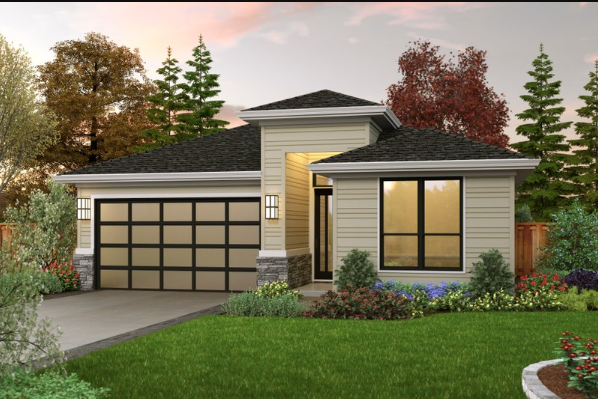The Prairie style house, an architectural gem that rose to prominence in the early 20th century, remains a beloved choice for homeowners seeking a harmonious blend of elegance and functionality. With its roots deeply embedded in the Midwest, this style owes much of its fame to the visionary architect Frank Lloyd Wright. His innovative designs emphasized simplicity, craftsmanship, and a seamless integration with the natural landscape. Today, Prairie homes continue to captivate with their timeless appeal and enduring charm.
A Brief History
The Prairie style emerged around 1900 and gained momentum as a distinct architectural movement through the works of Frank Lloyd Wright and his contemporaries. Inspired by the vast, flat landscapes of the American Midwest, these homes were designed to complement the natural surroundings rather than dominate them. Wright’s philosophy was creating organic structures that blended with the environment in form and function.
Key Features of Prairie-Style Homes
Horizontal Lines
One of the most defining characteristics of Prairie style homes is their emphasis on horizontal lines. This is achieved through low-pitched roofs, wide eaves, and long, flat lines that create a sense of continuity with the landscape.
Open Floor Plans
Wright pioneered the concept of open floor plans, eliminating unnecessary walls to create a sense of spaciousness. This design promotes a fluid movement between rooms, enhancing the home’s livability and fostering a sense of connectedness.
Natural Materials
Prairie homes often incorporate natural materials like wood, stone, and brick. These elements not only add to the aesthetic appeal but also reinforce the connection to nature.
Art Glass Windows
Stained glass windows featuring geometric patterns are a hallmark of Prairie style homes. These windows allow natural light to filter in while maintaining privacy and adding a touch of artistry to the design.
Built-in Furniture
Wright’s designs often included built-in furniture, such as bookcases and seating, to maintain the home’s clean lines and simplicity. This added to the space’s custom, tailored feel.
Integration with Nature
Large windows, porches, and terraces are common in Prairie homes, fostering a seamless indoor-outdoor living experience. The landscaping around the home is often designed to complement the architectural style, creating a cohesive aesthetic.
Modern Adaptations
While the core principles of Prairie style architecture remain intact, modern adaptations from Monster House Plans have brought this timeless design into the 21st century. Contemporary Prairie house plans might include sustainable building practices, energy-efficient systems, and smart home technology, all while preserving the essential characteristics that define the style.
Why Choose a Prairie House Plan?
- Timeless Elegance: Prairie-style homes’ clean lines and organic materials have a timeless quality that transcends trends. This ensures that your home remains stylish and relevant for years to come.
- Functional Design: The open floor plans and thoughtful integration of indoor and outdoor spaces make Prairie homes highly functional for modern living. Whether you enjoy entertaining or value a serene environment, these designs cater to various lifestyles.
- Connection to Nature: Prairie style homes are designed to harmonize with their surroundings. If you appreciate the beauty of natural landscapes and want a home that complements rather than competes with the environment, this style is an excellent choice.
- Architectural Heritage: Owning a Prairie style home means becoming part of a rich architectural heritage. It’s a tribute to the genius of Frank Lloyd Wright and the early 20th-century architects who revolutionized American residential design.
Conclusion
Prairie style house plans offer a unique opportunity to embrace a piece of architectural history while enjoying the benefits of modern design and functionality. With their emphasis on horizontal lines, open spaces, and natural materials, these homes provide a serene and elegant living experience that remains as relevant today as it was over a century ago. Whether you’re building a new home or renovating an existing one, consider the enduring appeal of Prairie style architecture for a timeless, harmonious living space.

